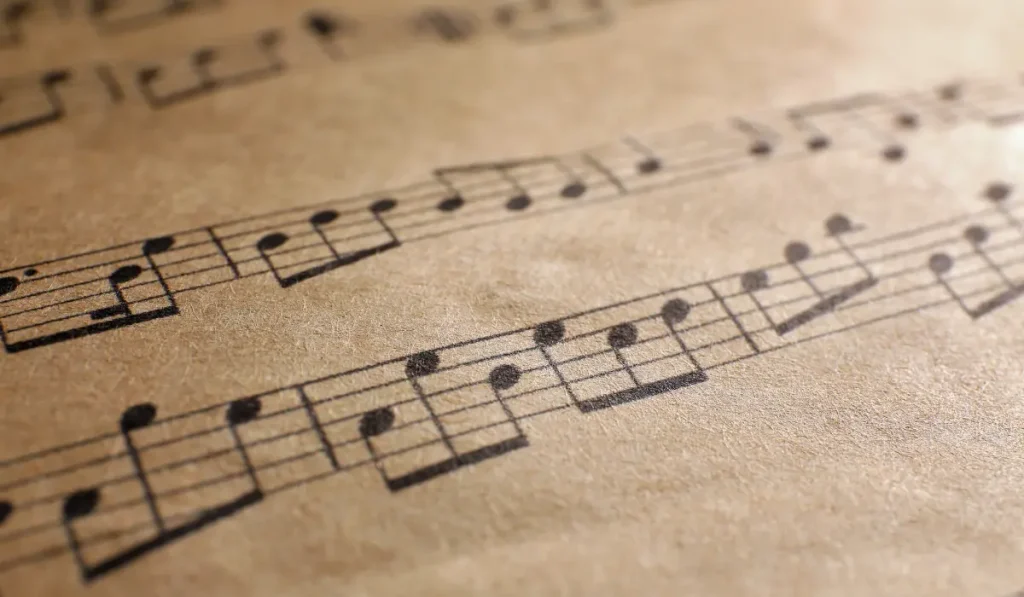AI technology has come a long way, and now it’s even making its mark in the music world. Programs like Suno are designed to help musicians create and compose music, but can they really create something as detailed as a lead sheet? In this article, we’ll explore what AI music programs can do and whether they are capable of producing high-quality lead sheets for musicians.
What Is a Lead Sheet?
Before diving into whether AI can create a lead sheet, it’s important to understand what a lead sheet is. A lead sheet is a simple way of writing down music that includes the melody, lyrics (if any), and chords. It’s often used in jazz, pop, and other genres as a guide for musicians to improvise or follow the main structure of a song.
What Are AI Music Programs Like Suno?
AI music tools like Suno use advanced algorithms to create and arrange music. They can analyze existing music and use patterns to generate new compositions. These programs can help musicians who are looking for inspiration or need help coming up with new musical ideas.
- Suno, for example, is an AI music tool that can generate melodies, harmonies, and even beats. It’s especially useful for musicians who want to explore new ideas quickly.
Can AI Like Suno Create Lead Sheets?

1. AI’s Ability to Generate Melodies
One of the key features of AI music programs is the ability to generate melodies. Since melodies are a crucial part of any lead sheet, Suno and similar AI tools are fully capable of producing melodic lines. These melodies can serve as a foundation for a lead sheet.
- While AI-generated melodies are often structured and consistent, they may lack the creativity or emotion that a human might bring.
2. AI and Chord Progressions
In addition to melodies, lead sheets also need chords to accompany the melody. AI tools like Suno can generate chord progressions that match the melody, making it possible to create a complete musical guide.
However, while AI can produce harmonically correct chords, they might not always have the complexity or uniqueness a human composer might create.
3. Incorporating Lyrics into Lead Sheets
Some AI programs even attempt to add lyrics to music, though this is often where they struggle the most.
Writing meaningful and contextually appropriate lyrics requires a level of creativity and emotional depth that AI still finds challenging.
Therefore, while AI can provide simple or generic lyrics, they usually need refinement from a human composer.
Strengths and Limitations of AI-Generated Lead Sheets
Strengths:
- Speed and efficiency: AI tools can generate lead sheets in minutes, which is helpful when you need a quick draft.
- Consistency: AI is great at producing well-structured melodies and harmonies.
- Inspiration: For musicians facing writer’s block, AI can provide a starting point.
Limitations:
- Lack of emotion and creativity: AI might create melodies and chords, but it can miss the personal touch and emotional depth that human composers provide.
- Basic lyrics: AI struggles with creating thoughtful, creative lyrics, often producing generic lines that may need rewriting.
How to Use AI-Generated Lead Sheets
While AI-generated lead sheets may not be perfect, they can still be useful tools. Musicians can take the melodies, chords, or ideas generated by AI and refine them into something more personal and unique.
- Practical uses: AI tools are great for quickly drafting musical ideas or creating a basic structure that can later be improved by human input.
Conclusion
AI programs like Suno can indeed create lead sheets, but with some limitations. While they excel at generating melodies and chord progressions, they often lack the emotional depth and creative flair that comes from human musicians. Still, these tools are valuable for inspiration and can serve as a great starting point for musicians who want to explore new ideas.
By using AI music tools like Suno, musicians can explore new ways to create and innovate while still maintaining their unique creative input. Try it out and see how AI can inspire your next musical project!